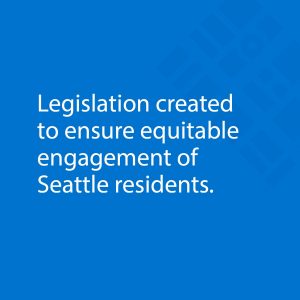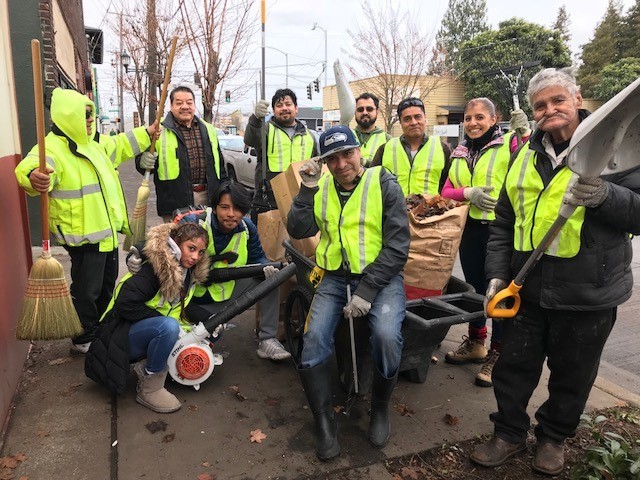Finding Ways to Engage More Diverse Citizens
The Problem
The city’s existing mechanisms for engaging citizens disproportionately favored affluent homeowners.
- The city relied on Neighborhood District Councils that were created in the 1990s as their primary sounding boards for neighborhood planning. These councils were primarily comprised of white, affluent homeowners. Meanwhile, renters who now comprised over half of the city’s population, and lower-income populations, including a growing number of homeless residents, were not adequately represented.
- As the composition of Seattle’s population continued to change, the city needed to revisit and expand its public engagement efforts in order to ensure that a diversity of interests were represented in city decision-making processes and to eliminate barriers that prevented participation.
The Solution
The city appointed Seattle’s director of neighborhoods, who plays a Chief Service Officer-like role, to create new infrastructure to engage more diverse citizens.
- In July of 2016, Executive Order #2016-06 was signed, reaffirming the City’s commitment to “advance the effective deployment of equitable and inclusive engagement strategies across all City departments.”
- In the 2017-2018 Budget, legislation was included that addressed equitable outreach and engagement principles, outlined a new citywide framework for community engagement, and created a Community Involvement Commission.
- Director of Neighborhoods Kathy Nyland was asked to lead these efforts.
- The old Neighborhood District Councils were disbanded.
The Results
- Director of Neighborhoods Nyland recruited volunteers to serve on the new 16-member Community Involvement Commission, which is tasked with helping city departments reach all residents, including communities such as low-income people, homeless residents and renters who have been traditionally underrepresented.
- One commission member, Somali refugee Mohamud Yusuf, told Next City, “I’ve been involved in the community since I was here but I’ve never seen this kind of involvement. What we needed was to be included, to be at the table and have a voice.” As an example, he shared with Next City that the Somali community appreciated city workers traveling to meet with residents in local places like community centers rather than asking them to travel to government buildings — and being able to talk to citizens in their native languages.
- Nyland worked with community partners to create Get Engaged, a road map for continuing to develop tools and processes that ensure more equitable citizen outreach and engagement. As she says, “Successfully engaging the community in the process increases the likelihood of public support and better outcomes.”
“We’ve created more ways for community members to collaborate with city government. As a result, Seattle citizens now see and feel that we are listening.”
Kathy Nyland, Chief Service Officer, City of Seattle
Explore more Chief Service Officer City Spotlights or learn more about Seattle’s Service Plan.

